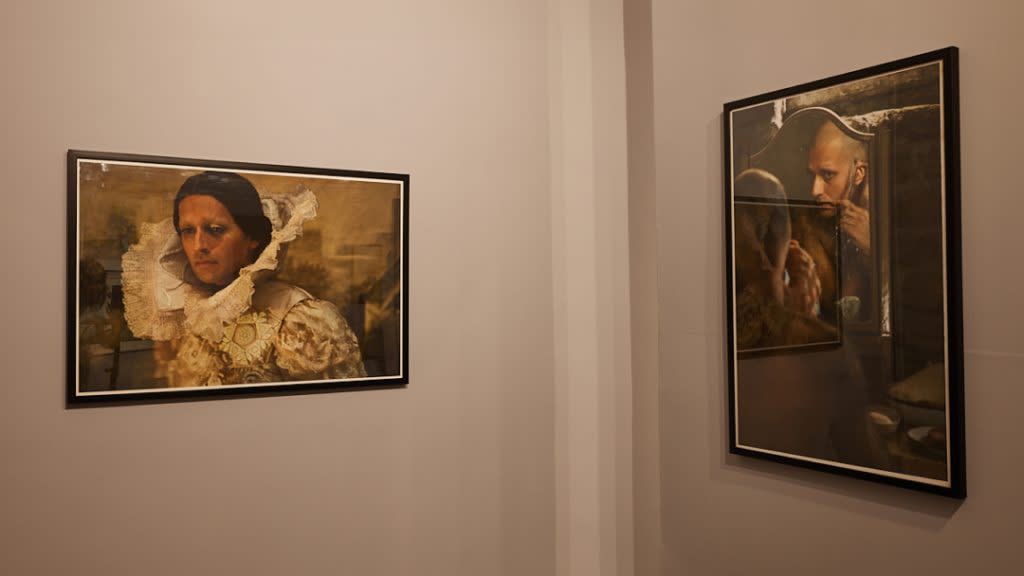A photograph allows us to come face-to-face with a moment suspended in time. It is an event, a dialogue that hoves into view that which has passed – for days, years, sometimes decades or centuries. It is an intimate conversation, one riddled with appreciation, curiosity, and oftentimes, confusion; We long to catch a glimpse, cast an eye, and find ourselves looking. But what happens when a photograph looks back?
This eclectic selection of photographs underscores our imperceptible, almost taken-for-granted ‘right to look;’ we are made aware of a power struggle that questions, “Who allowed you to look?” We enter a world of tension, of challenging gazes and interrupted moments that stun the viewer. Our presence feels like an intrusion: for instance, one of Nikhil Chopra’s Yog Raj Chitrakar (2008) images, with the characteristic performance artist staging the fictional drama of his grandfather, surprises us with a questioning glare as the artist shaves his hair. We are riveted into wondering where (and who) the artist is looking at – is he simply looking at himself in the mirror, or staring at our interference in his moment of privation? It is a mise-en-scene that quickly turns on its head when we catch Chopra in another photograph; this time, however, the artist – regally draped in a Baroque dress – looks solemnly away from the viewer. It is a moment that leaves us with an anguish, a fragile melancholy that remains to be deciphered; a moment that is also made solemnly unique in Umrao Singh Sher-Gil’s image Amrita with models for young girls (1932).
We are also made aware of the photographer’s intention; these are images that reflect a choice, a conscious decision to ‘see’ life. Jyoti Bhatt’s Meena Woman (2007) attentively locks eyes with the camera. Jyoti Bhatt’s lens is trained on a tribal way of life that is unshaken in the presence of this outsider. Meena Woman elicits a countervisuality – a response, a declaration that upends the viewer’s privilege. What Gauri Gill’s Boy Bathing in Taalab (2012) and Akshay Mahajan’s Untitled (2014) poignantly capture – a gaze that challengingly looks back – is made particularly remarkable with Pushpamala N’s Yogini Pop (2001-2004), where the artist performs a theatrical fantasy of becoming a goddess amidst a witty presentation of costumes, contemporary props, and staged environment. Pushpamala’s gaze is sly, challenging our preconceived notions of figuration and its depiction. It is the creation of a story that Vivan Sundaram’s photographs are attuned to. In their montages, the artist assembles photographs of Amrita Sher-Gil taken by her father along with his iconography. We are beseeched into a playground where fact and fiction collide, where truth and myth stare at us. Such a manufacturing of a documentation is also seen in Max Pincker’s works, where he contorts contexts, histories, and imagination to challenge the language of realism. It is a tug-of-war between the realms of make-believe and real; a swinging pendulum that locates Remen Chopra’s Time looks on the possibility of optimism (2012), a photograph that bares to us the artist’s own lived (and dramatised) experience in the age of mass-media and popular culture.
